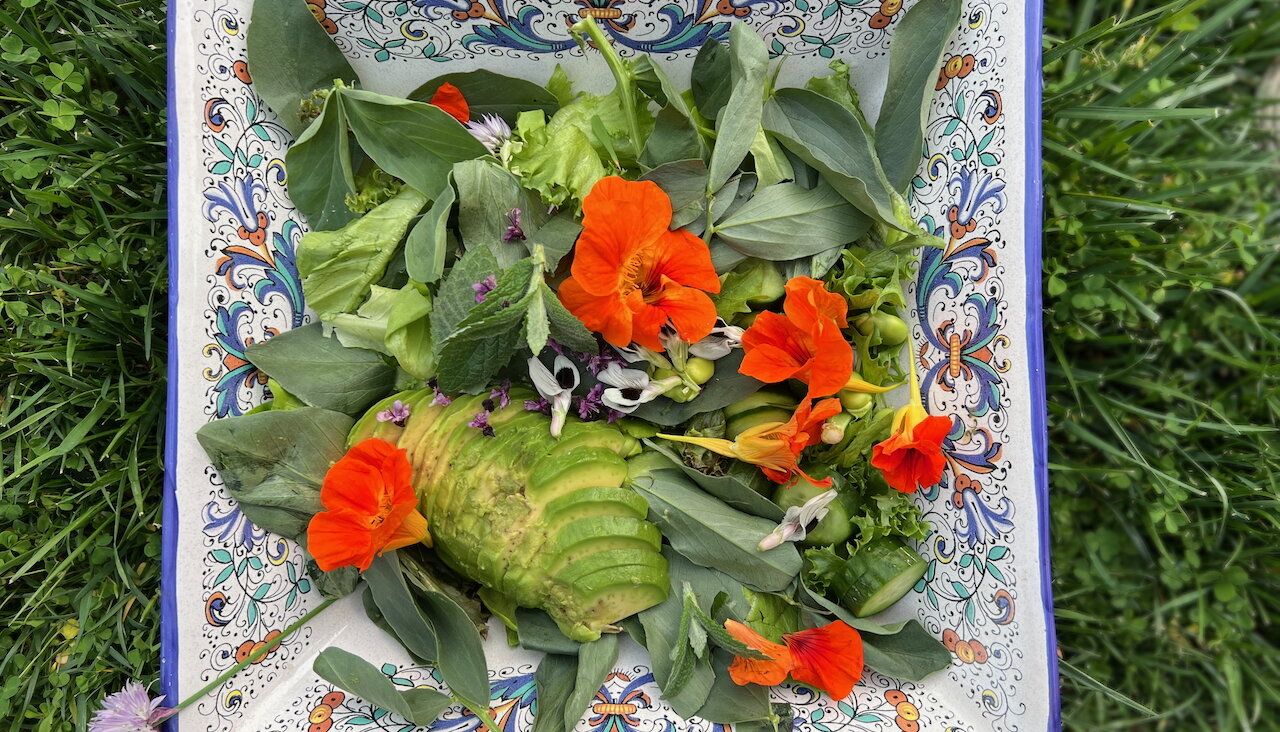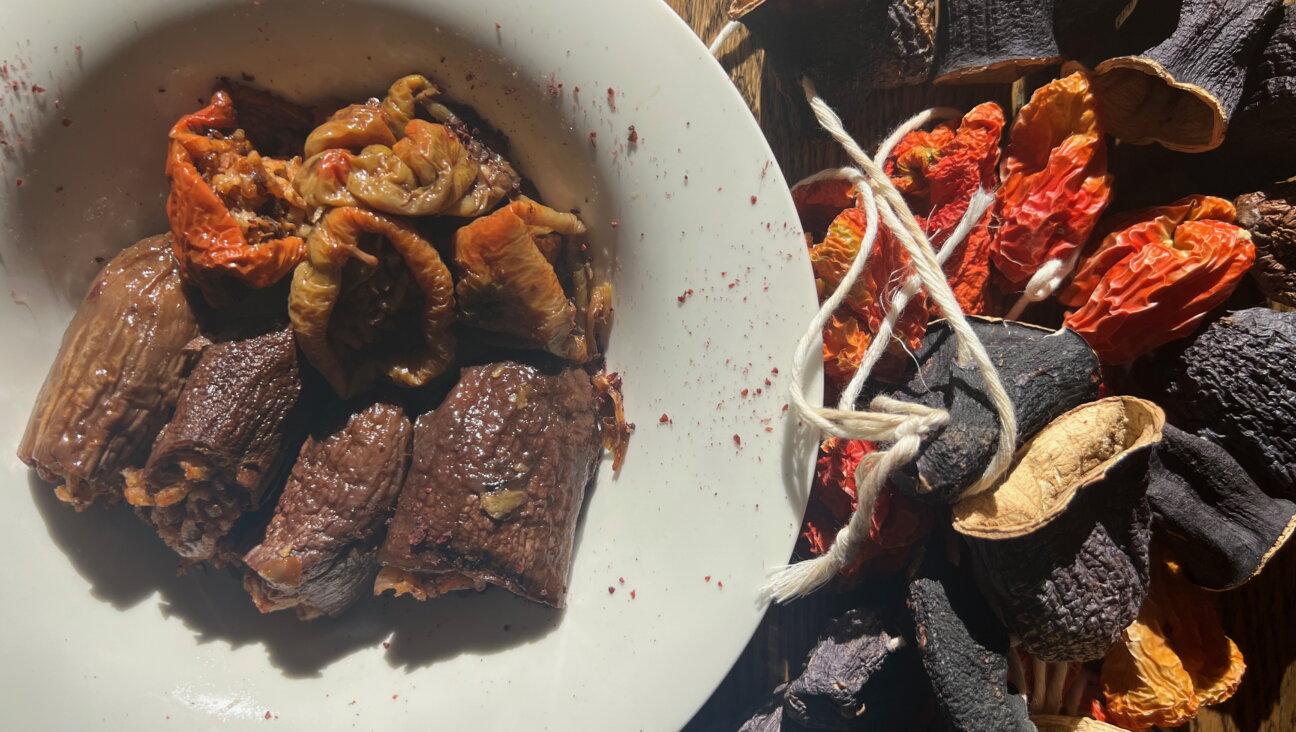When Bakers Do Matzo

Image by Courtesy of James Barrett/Metropolitan Bakery
Matzo’s known as the “bread of affliction.” And — truth be told — some boxed matzo lives up to the moniker.
But more and more chefs and artisan bakers are creating their own matzos, bringing a homegrown twist to the ultimate Passover food — and, in a way, taking matzo back to its DIY roots.
There are “huge differences” in handmade matzo and the boxed sheets, says Mark Fiorentino, chef Boulanger at Daniel Boulud’s seven New York-area restaurants, including Daniel and DB Bistro Moderne.
“Manischewitz is made by machine, so after they put the ingredients in the mixing machine. Hands do not touch the product until after it’s baked,” Fiorentino told the Forward in an e-mail. “Our entire process is hands-on from start to finish, as we’re making a more artisan-level quantity. And while matzo in a factory bakes at around 900°F, my ovens only get up to 500°F. So while theirs bakes in about 32 seconds, ours takes about 5 to 7 minutes.”
What’s a perfect matzo? “It’s light and crispy,” Fiorentino says. “The ‘bubbles’ on top should be brown in color in contrast to the rest of the bread, which should look only slightly baked.”
James Barrett, co-founder and owner of Philadelphia’s Metropolitan Bakery, which makes their own matzo. agrees. “The first thing I check is the appearance. Does it have that rustic caramel coloring/tone from going into high-temperature oven? Any blisters?” he says. “Then once I crack it open, I listen for the sound, and as I taste it, I check out the crunch and flavor. The crunch is very different. Our matzo crackles.”
Considering the limited ingredients involved in making matzo — kosher recipes call for just flour and water – how much room is there for creativity? Plenty, says Barrett, though he acknowledges that flouting kashrut offers latitude.
“Not being so caught up in Jewish law, and having a background as a chef, has been very helpful,” acknowledges Barrett, who was raised in a non-Jewish home the heavily Jewish area of Northeast Philadelphia. When a neighbor served him matzo as a kid, he was blown away. Metropolitan has also introduced flavored matzo – a first, according to Barrett. This year, onion/black pepper will join Metropolitan’s popular lineup of plain, sesame, black olive/rosemary, sun-dried tomato with parmesan, and roasted garlic flavors.
Boulud’s Fiorentino, likewise, was raised Catholic, and never even baked matzo until taking the Daniel gig 10 years ago.
“I don’t have any childhood matzo memories to share, but when I began making matzo here, a regular patron of ours who is ‘of the faith’ thought my recipe and technique needed a bit of work,” Fiorentino told the Forward in an e-mail. “He suggested that together we visit a matzo factory and get a tutorial to improve upon the recipe. The owner of Streit’s matzo factory on the Lower East Side took us right in and shared his time-tested tricks of the trade.
“I took the tips back to my kitchen and adjusted recipe and process — now I roll the dough through a sheeter to flatten it out, cut out squares with a pizza cutter, and bake in a deck oven at 500-525ºF,” Fiorentino says. “While the result is a very different product than what you’ll get from the big producers, it’s a product we’re happy with.”
His secret for revelatory matzo: “There is no secret! Matzo is actually very easy to make, and keeping it simple yields the best results,” Fiorentino says. “I use just four ingredients: flour, water, canola oil, salt. Nothing more. The trick to getting the right dough consistency and malleability is to make small batches — this creates a dough that rolls out more easily.”
Metropolitan’s Barrett throws in a baker’s-secret twist. “I add a touch of durum flour,” says Barrett, whose company now sells more than 4000 sheets of matzo through the holiday. “I find it helps make it sturdier for transportation, it also increases the crunch factor.”
At Brooklyn’s Mile End Delicatessen, owner Noah Bernamoff says “good flour” is the only “secret ingredient” to great matzo. “It needs to be crispy, not just crunchy, with a lightly salty flavor,” he told the Forward.
Mile End, which is limiting matzo production to catering clients as it continues to rebuild from Hurricane Sandy, doesn’t see a huge demand for matzo anyway, Bernamoff says.
“Given our customer base, there is fairly low demand,” he says. “Most of our customers will eat matzo at the seder, but not refrain from eating leavened foods throughout the entirety of Passover. I would estimate, aside from our catering clients, that less than 5% of our customers in the store request matzo instead of bread.” Still, when they do request matzo, they won’t be getting anything like the boxed stuff we know as matzo.
The Forward is free to read, but it isn’t free to produce

I hope you appreciated this article. Before you go, I’d like to ask you to please support the Forward.
Now more than ever, American Jews need independent news they can trust, with reporting driven by truth, not ideology. We serve you, not any ideological agenda.
At a time when other newsrooms are closing or cutting back, the Forward has removed its paywall and invested additional resources to report on the ground from Israel and around the U.S. on the impact of the war, rising antisemitism and polarized discourse.
This is a great time to support independent Jewish journalism you rely on. Make a gift today!
— Rachel Fishman Feddersen, Publisher and CEO
Support our mission to tell the Jewish story fully and fairly.
Most Popular
- 1

Fast Forward Ye debuts ‘Heil Hitler’ music video that includes a sample of a Hitler speech
- 2

Opinion It looks like Israel totally underestimated Trump
- 3

Culture Cardinals are Catholic, not Jewish — so why do they all wear yarmulkes?
- 4

Fast Forward Student suspended for ‘F— the Jews’ video defends himself on antisemitic podcast
In Case You Missed It
-

Culture How one Jewish woman fought the Nazis — and helped found a new Italian republic
-

Opinion It looks like Israel totally underestimated Trump
-

Fast Forward Betar ‘almost exclusively triggered’ former student’s detention, judge says
-

Fast Forward ‘Honey, he’s had enough of you’: Trump’s Middle East moves increasingly appear to sideline Israel
-
Shop the Forward Store
100% of profits support our journalism
Republish This Story
Please read before republishing
We’re happy to make this story available to republish for free, unless it originated with JTA, Haaretz or another publication (as indicated on the article) and as long as you follow our guidelines.
You must comply with the following:
- Credit the Forward
- Retain our pixel
- Preserve our canonical link in Google search
- Add a noindex tag in Google search
See our full guidelines for more information, and this guide for detail about canonical URLs.
To republish, copy the HTML by clicking on the yellow button to the right; it includes our tracking pixel, all paragraph styles and hyperlinks, the author byline and credit to the Forward. It does not include images; to avoid copyright violations, you must add them manually, following our guidelines. Please email us at [email protected], subject line “republish,” with any questions or to let us know what stories you’re picking up.















